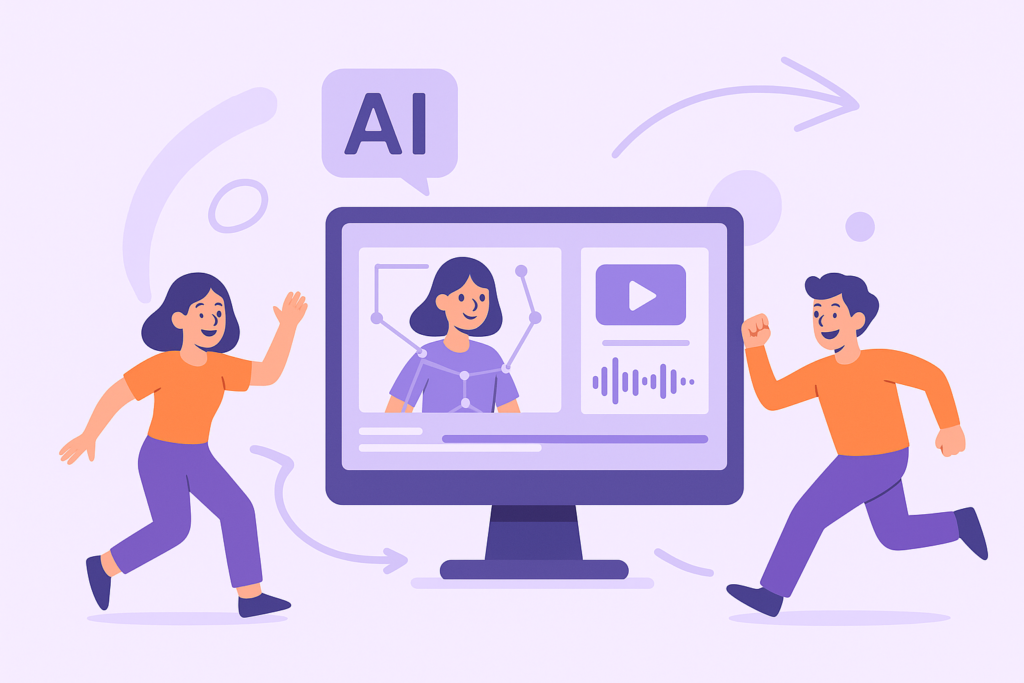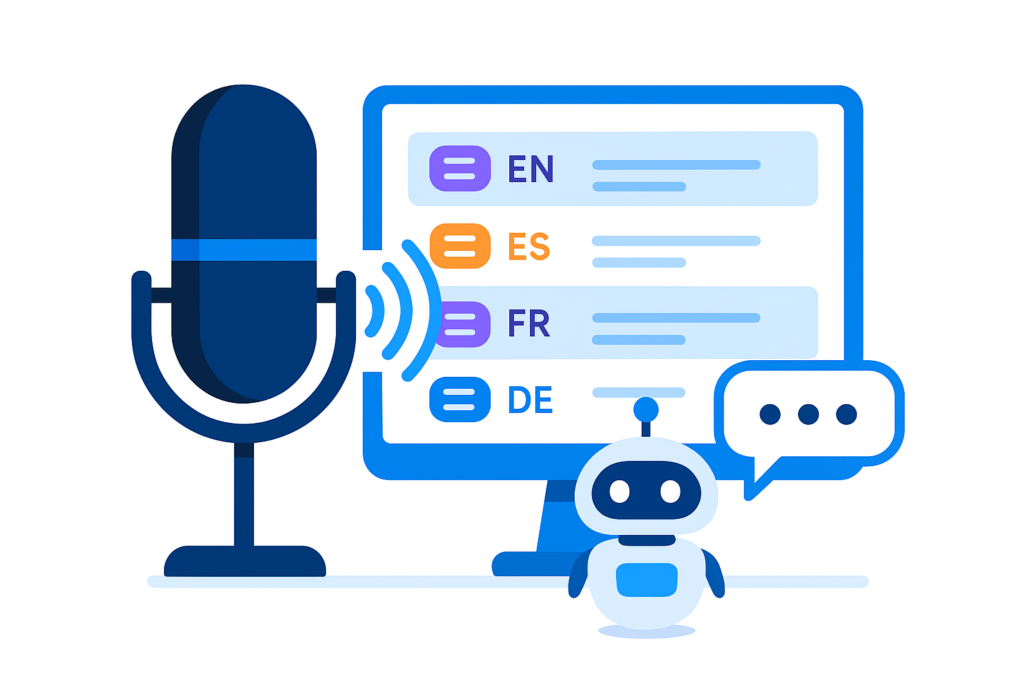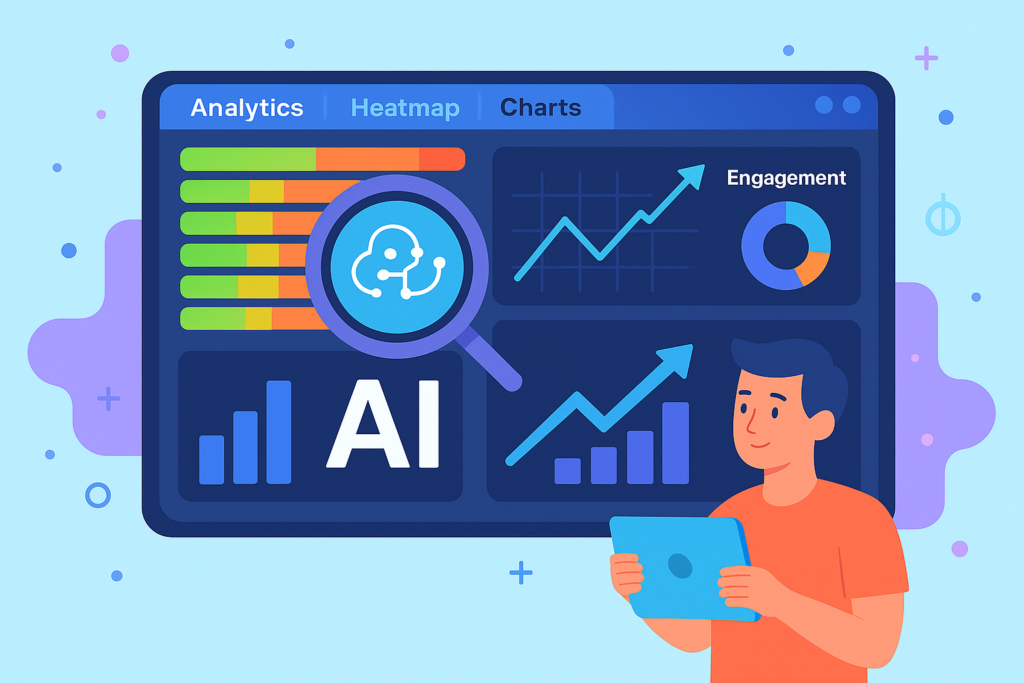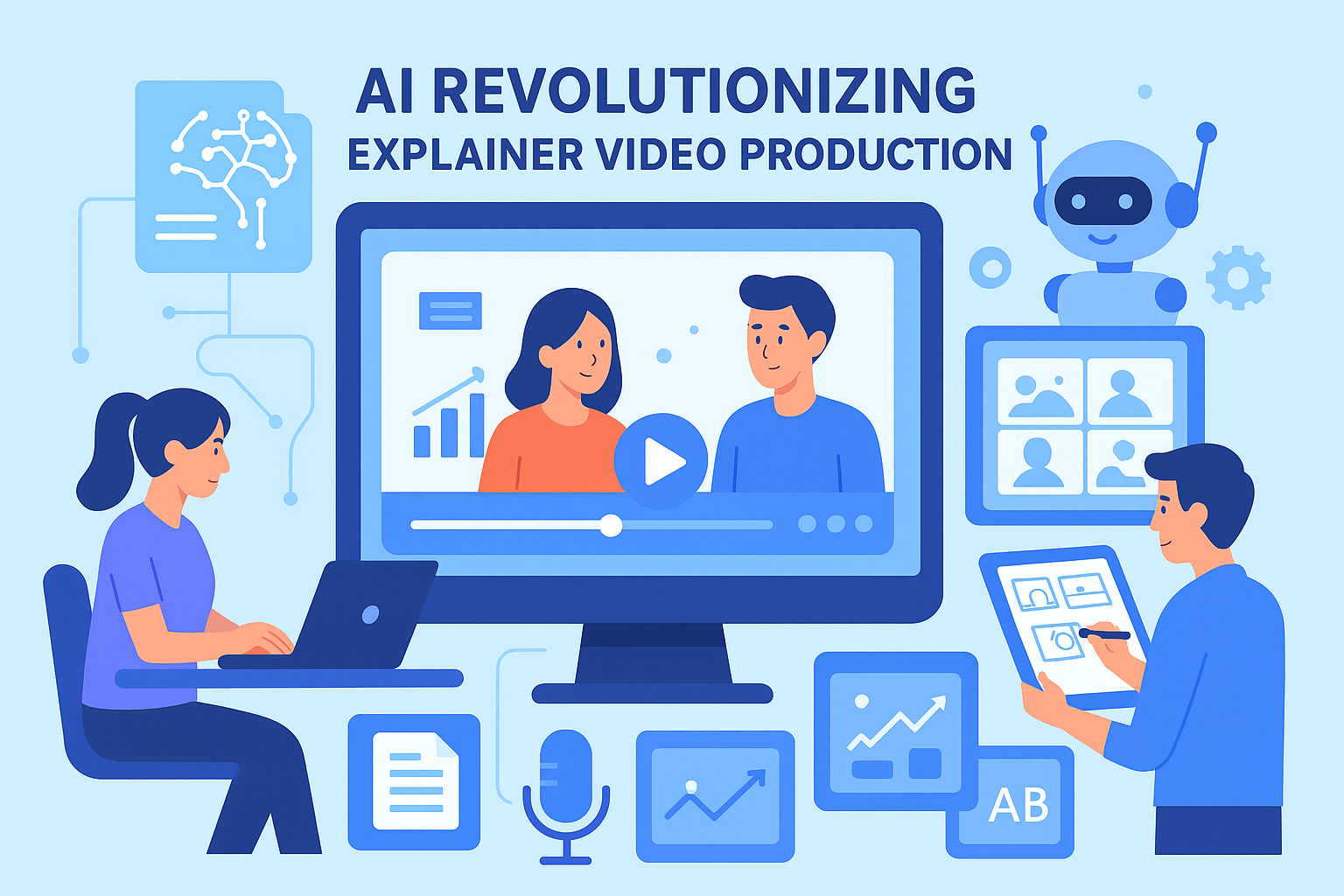AI Is Revolutionizing Explainer Video
Traditionally, producing these videos required extensive collaboration between scriptwriters, storyboard artists, animators, designers, and voiceover professionals. This process often took weeks and demanded significant resources.
Artificial Intelligence (AI) is changing this reality. By automating repetitive tasks and providing smarter creative assistance, AI is making explainer video production faster, more efficient, and more accessible — while also enabling personalization and innovation at scale.
This article explores how AI is revolutionizing explainer video production, where it’s heading, and why human creativity still plays an essential role.
Why Explainer Videos Matter Today
Before looking at AI’s impact, it’s useful to revisit why explainer videos are so powerful in today’s media landscape.
Clarity for complex topics: Videos can simplify even the most technical concepts.
Stronger engagement: Visual storytelling holds attention better than text.
Versatility: Explainers work equally well for marketing, training, or education.
High impact: They build trust, explain value quickly, and support conversions.
The rising demand for explainer videos has increased the need for faster, scalable production methods — and this is exactly where AI makes a difference.
1:- Smarter Scriptwriting
The script serves as the blueprint that shapes an explainer video. Traditionally, writing one required several drafts and client approvals.
Now, AI-powered writing tools can analyze brand tone, audience needs, and communication goals to produce first drafts in minutes.
Benefits include:
Faster turnaround for script creation.
Consistency in messaging across campaigns.
Easy adaptation of scripts for different markets and languages.
Human writers remain critical for refining tone, injecting emotion, and ensuring authenticity — but AI provides a strong head start.


2:- Automated Storyboarding and Visual Concepts
Storyboarding ensures that the script comes to life visually. This step was once highly manual, requiring artists to sketch each scene.
AI design platforms now generate quick storyboard concepts directly from text descriptions.
For example, inputting “a customer using a mobile app for grocery delivery” can instantly create multiple scene options.
Advantages:
Rapid idea generation for faster client feedback.
Early visualization that reduces rounds of revisions.
More time for creative teams to focus on polish and detail.
AI doesn’t replace artistic direction — it accelerates brainstorming and alignment.


3:- AI-Enhanced Animation
Animation is traditionally the most resource-heavy part of explainer production. Characters need to move naturally, transitions must be seamless, and visual consistency has to be maintained. Please have a look some of our AI Explainer Videos:-
For more please visit:-
https://studio.youtube.com/channel/UC2r9zbNvqmq9WLIdCPZm-Rw/videos


4:- Transforming Voiceovers with AI
Voiceovers set the tone of an explainer video. Traditionally, this meant hiring voice artists, booking studio sessions, and handling revisions. AI-generated voices are changing this dramatically.
Key advantages:
Natural-sounding AI voices with diverse tones, styles, and accents.
Instant revisions whenever the script changes.
Effortless localization into multiple languages.
While human talent still excels at conveying deep emotion and nuance, AI voiceovers deliver speed and flexibility that fit the needs of most explainer video projects.


5:- Personalization at Scale
Personalization is now a cornerstone of effective communication. AI allows explainer videos to be customized for specific audiences at scale.
Scripts, visuals, and voiceovers can all be adapted automatically to reflect different industries, demographics, or regions.
Example use cases:
A technology company delivering tailored videos for healthcare, finance, and retail clients.
Multilingual campaigns where each region receives a localized version of the same explainer.
This capability increases relevance and engagement while maintaining efficiency.


6:- Data-Driven Insights
AI doesn’t stop at production — it enhances how explainer videos are measured and optimized.
By analyzing metrics such as watch times, audience drop-off points, and click-through rates, AI provides insights that inform better storytelling decisions.
Benefits include:
Identifying which scenes capture attention most effectively.
Adjusting video length to maximize viewer retention.
Continuously improving future videos based on audience behavior.
This transforms explainer video creation into a cycle of data-driven learning and refinement.


7:- Making Video Production More Accessible
Perhaps one of AI’s greatest contributions is accessibility. Businesses of all sizes — from startups to enterprises — can now create professional-grade explainer videos without the heavy resource demands of the past.
AI tools reduce production timelines and simplify workflows, empowering more organizations to embrace video as a communication strategy. This democratization is expanding the reach of explainer videos far beyond large-scale marketing departments, opening opportunities for educators, non-profits, and small businesses as well.
The Human Element: Why Creativity Still Matters
Despite AI’s impressive capabilities, human creativity remains at the heart of effective explainer videos. AI can generate scripts, animate characters, and produce voices, but emotional depth, storytelling vision, and cultural nuance come from human creators.
The future lies in collaboration:
AI takes care of efficiency and scalability.
Humans focus on strategy, empathy, and creative impact.
This partnership ensures videos remain authentic, relatable, and memorable.
The Future of AI in Explainer Video Production
AI’s current capabilities are just the beginning. Looking forward, we can expect innovations such as:
Instant video generation: Turning scripts into ready-to-use explainer videos in minutes.
Interactive explainers: Videos that adapt dynamically to viewers’ responses or questions.
Realistic AI avatars: Digital presenters that seamlessly deliver content in multiple languages.
These advances will further blur the line between automation and creativity, offering limitless opportunities for brands to connect with audiences.
Conclusion
AI is revolutionizing explainer video production at every stage — from scriptwriting and storyboarding to animation, voiceovers, and performance tracking.
What once required large teams and long timelines can now be achieved more quickly and with greater precision.
Yet the essence of a great explainer video hasn’t changed: it’s about telling a clear, engaging, and human-centered story. AI makes the process faster and more scalable, but human creativity ensures the story resonates.
For businesses and creative agencies alike, the future is not about choosing between AI and people — it’s about combining the strengths of both. Those who embrace this partnership will lead the way in a new era of video communication. For more please visit 75seconds or Explainervideo4u

